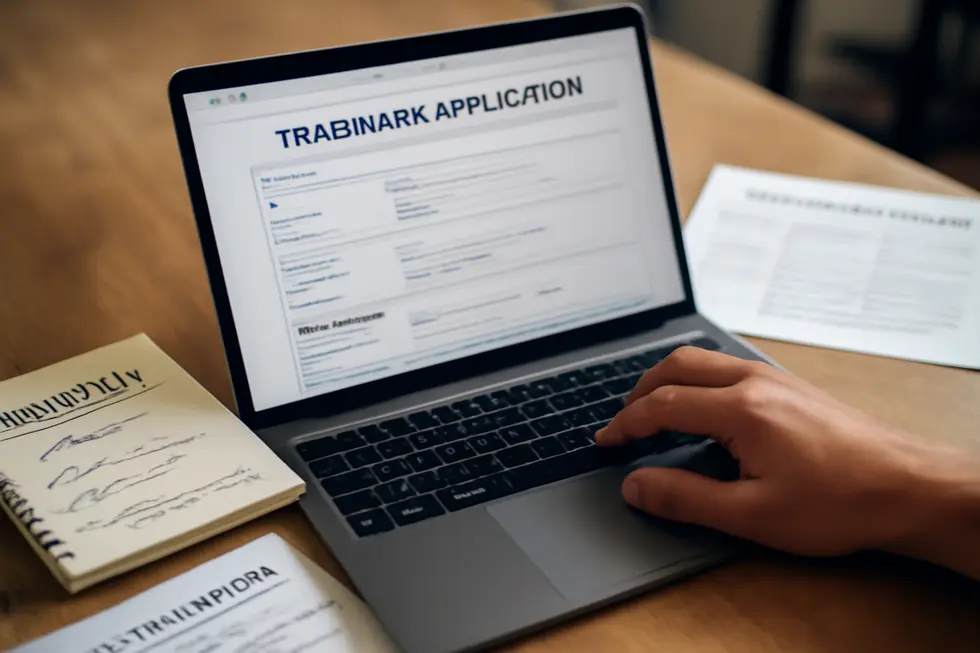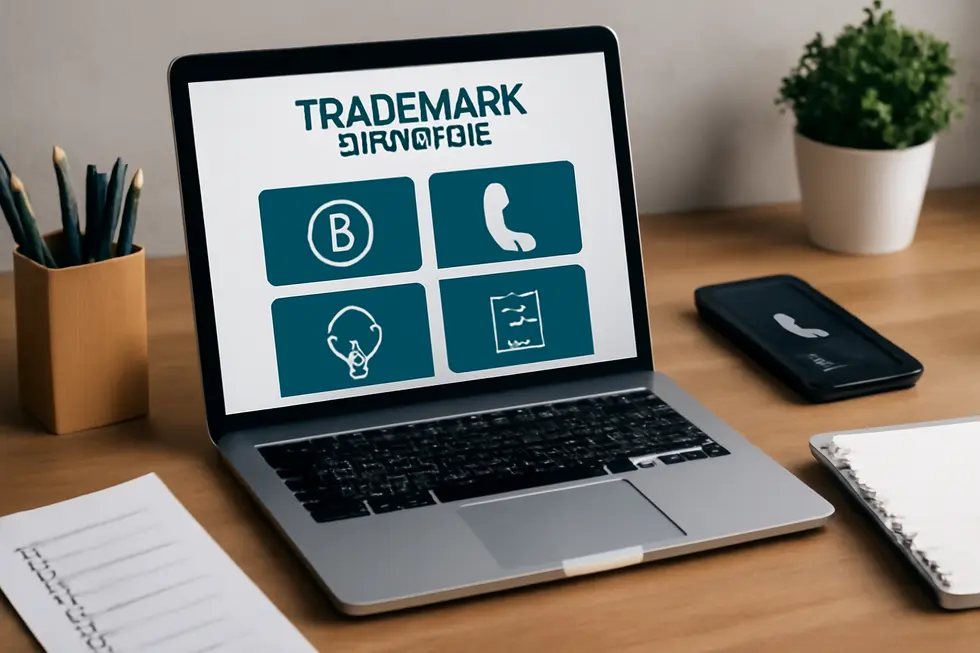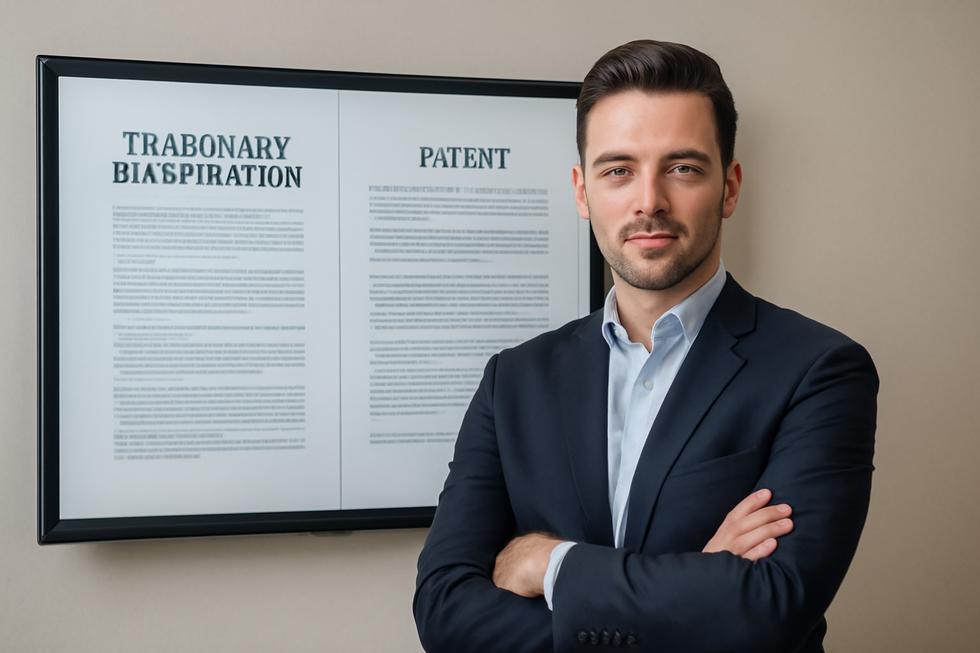Introduction
Protecting your business name is essential to establishing a unique identity and building brand value. However, many business owners mistakenly assume that a “name patent” is the proper way to secure exclusive rights to their brand’s name. Understanding the difference between patents and trademarks is the first critical step in safeguarding your intellectual property. This guide explores how the term “name patent” is a common misconception and clarifies why trademarks—not patents—are the proper tool for protecting names. You’ll learn the trademark registration process, the legal technicalities involved, practical steps to take, and how this compares with the patent system for inventions. Each chapter builds a clear, coherent path to ensure you can confidently protect your business name in the right way.
Tables of Contents
Chapter 1: Understanding How to Get a Name Patent: Differentiating Patent from Trademark
- Clarifying Name Protection: Why Patents Don’t Cover Names and How Trademarks Safeguard Brand Identity
- Clarifying Legal Protections: Why Names Require Trademarks, Not Patents
- Why Trademark Registration, Not Patents, Protects Business and Product Names
- Duration and Legal Rights: Why Patents and Trademarks Offer Distinct Protections for Names and Inventions
- Brand Identity Protection: Why Trademarks, Not Patents, Safeguard Names and Logos
Chapter 2: The Essential Process of How to Get a Name Patent Through Trademark Registration
- Clarifying the Difference Between Patents and Trademarks in Protecting a Name
- Ensuring Name Availability: Mastering the Comprehensive Search to Secure Trademark Registration
- Strategic Application Preparation: Selecting Classes and Optimal Filing Choices for Name Trademark Registration
- Mastering the Crucial Examination and Opposition Phases in Name Trademark Registration
- Sustaining Your Trademark Rights: Key Steps in Post-Registration Maintenance
Chapter 3: Technical and Legal Aspects Involved in How to Get a Name Patent
- Clearing the Confusion: Why Names Are Protected by Trademarks, Not Patents
- Trademark Registration: The Legal Framework for Securing Name Protection Instead of Patents
- Why a Name Cannot Be Patented: Exploring Patent Criteria Versus Trademark Protection
- Mastering Legal Procedures: Trademark Registration Versus Patent Application for Names and Inventions
- Navigating the Intricacies of Patent Applications: Why Expert Legal Support is Vital
Chapter 4: Practical Steps and Services for How to Get a Name Patent
- Mastering Preliminary Searches: Navigating Patent and Trademark Databases for Name Protection
- Navigating the Patent Application Process: Clear Steps for Inventors
- Navigating Trademark Registration: Essential Steps to Protect Your Name Legally
- Mastering the Patent Office Process: Why Name Protection Relies on Trademarks, Not Patents
- Navigating Legal Expertise and Professional Support in Securing Name Rights and Patent Protection
Chapter 5: Comparative Analysis of How to Get a Name Patent Versus Patenting an Invention
- Legal and Intellectual Property Insights: Distinguishing Name Protection from Patent Rights
- Navigating Application Processes: Trademark Registration for Names Versus Patent Filing for Inventions
- Navigating Duration, Costs, and Maintenance: Trademark Protection for Names vs. Patent Protection for Inventions
- Technological Innovation and Brand Equity: Contrasting Patent and Trademark Protections
- Economic and Societal Impact of Trademark and Patent Protection for Names and Inventions
Chapter 1: Understanding How to Get a Name Patent: Differentiating Patent from Trademark

1. Clarifying Name Protection: Why Patents Don’t Cover Names and How Trademarks Safeguard Brand Identity
Many people mistakenly believe that a name can be patented, but patents specifically protect inventions, processes, or designs—not names. Instead, names, including brand names, slogans, and logos, fall under trademark law, which safeguards the distinctive identifiers used in commerce. Patents grant exclusive rights for new, useful, and non-obvious inventions to prevent unauthorized use, whereas trademarks protect the identity of products or services by preventing consumer confusion. A company’s legal name and its trade name serve different purposes but neither are protected by patents. To secure exclusive rights to a name, one must register it as a trademark through the USPTO, a process involving comprehensive searches and application review. Understanding this fundamental difference clarifies why pursuing a trademark, not a patent, is essential for name protection. For comprehensive insights into trademark protection, refer to detailed guides on trademark protection for business names and logos.
2. Clarifying Legal Protections: Why Names Require Trademarks, Not Patents
It is essential to recognize that patents do not cover names. Patents protect inventions, such as new machines, processes, or compositions that meet criteria of novelty, usefulness, and non-obviousness. In contrast, names—whether brand names, logos, or slogans—are protected under trademark law. Trademarks secure exclusive rights to use distinctive identifiers in commerce, distinguishing goods or services from others. The application process for trademarks differs significantly from patents: registering a trademark involves submitting an application to the USPTO showing the name’s use or intent in commerce, undergoing an examination, and maintaining registration through renewals. Patents demand detailed invention disclosures and rigorous examination but do not apply to brand identifiers. Thus, protecting a name requires pursuing trademark registration rather than a patent. For detailed trademark guidance, visit the trademark protection for business names and logos resource at Trademark2Go. More information on patents and their inapplicability to names can be found through the USPTO official resources.
3. Why Trademark Registration, Not Patents, Protects Business and Product Names
Protecting a business or product name relies on trademark law, not patents. While patents safeguard inventions, trademarks guard names, logos, and slogans that identify your goods or services. A trademark registration grants exclusive rights to use a distinctive mark in commerce, preventing others from adopting confusingly similar identifiers. The process begins with a comprehensive trademark search to verify the name’s availability, followed by filing an application with the USPTO. This application must clearly describe the mark and specify the associated goods or services, accompanied by required fees. After examination and an opposition period, successful registration confers nationwide protection and strengthens legal enforcement. Unlike patents, trademarks do not require novelty or inventive steps but focus on uniqueness and distinctiveness in trade. For reliable trademark guidance, resources such as trademark protection for business name and logo can clarify the correct path. Ultimately, a name patent does not exist; trademark registration remains the practical route to securing brand identity.
4. Duration and Legal Rights: Why Patents and Trademarks Offer Distinct Protections for Names and Inventions
It is essential to recognize that patents and trademarks serve fundamentally different purposes and confer distinct rights and durations. Patents protect inventions—new, useful, and non-obvious products or processes—granting exclusive rights to manufacture, use, or sell these inventions for about 20 years from the filing date. After this period, the protection expires, allowing public use. In contrast, trademarks safeguard brand identifiers such as business or product names, logos, and slogans to prevent consumer confusion. Trademark registration lasts an initial 10 years but can be renewed indefinitely as long as the mark remains active in commerce. This continuous renewal enables lasting protection for names, unlike the finite term of a patent. Moreover, while patents prevent others from exploiting the invention itself, trademarks focus on the exclusive commercial use of a mark, ensuring brand distinction rather than invention exclusivity. To properly protect a name, trademark registration is the accurate approach, not patenting. For more on how to secure name protections, explore detailed guidance on trademark protection for business names and logos.
5. Brand Identity Protection: Why Trademarks, Not Patents, Safeguard Names and Logos
While the term “name patent” is often confused, it is important to clarify that patents cannot protect names, logos, or slogans. These elements form the core of a brand’s identity and fall squarely under trademark law. Patents are designed to protect inventions—new, useful, and non-obvious products or processes—granting exclusive rights typically for 20 years. In contrast, trademarks protect brand identifiers that distinguish your products or services in the marketplace, providing potentially indefinite protection as long as the mark remains in use and is properly maintained.
This distinction has practical implications for market identity. Securing a trademark ensures exclusive rights to your name and logo, preventing others from using confusingly similar marks and thus preserving your brand’s reputation and consumer recognition. The trademark registration process involves searching for existing marks, applying through the USPTO, and ongoing renewal. By focusing on trademark registration rather than patenting, businesses effectively protect their brand identity and ensure long-term marketplace exclusivity.
For detailed guidance on protecting brand names and logos, see trademark protection for business name and logo.
Chapter 2: The Essential Process of How to Get a Name Patent Through Trademark Registration

1. Clarifying the Difference Between Patents and Trademarks in Protecting a Name
Obtaining a patent for a name is a common misconception; in reality, names are protected through trademark registration, not patents. Patents safeguard inventions, processes, or designs, whereas trademarks protect brand identifiers such as names, logos, and slogans that distinguish goods or services in commerce. To secure exclusive rights to a name, you must navigate trademark registration, which starts with a comprehensive search for existing marks using the USPTO’s Trademark Electronic Search System (TESS). The application is then submitted online via TEAS, with specific fees and procedural requirements depending on the chosen form. Following USPTO examination to detect conflicts or deficiencies, you may need to reply to office actions before your name is officially registered. Unlike patents, trademarks can last indefinitely, provided renewal and active use continue. This distinction underscores why “patenting” a name is incorrect terminology; trademark law is the proper path to protect your brand’s name and identity. For detailed guidance, visit the USPTO Trademark Registration. For more insights on protecting your business name and logo, see Trademark Protection for Business Name & Logo.
2. Ensuring Name Availability: Mastering the Comprehensive Search to Secure Trademark Registration
Before filing for trademark registration, conducting a comprehensive search to verify name availability is crucial. This process involves exploring federal databases like the USPTO’s Trademark Electronic Search System (TESS) to detect exact matches, phonetic similarities, or related industry trademarks. State trademark registries and business databases must also be reviewed since many names may be registered locally without appearing federally. Additionally, common law trademarks—unregistered yet legally significant uses—should be investigated via internet searches, domain databases, and directories to avert potential conflicts.
For trademarks involving logos, design code searches help ensure originality. Because automated searches may overlook nuanced conflicts, enlisting professional trademark search services or consulting a trademark attorney greatly enhances accuracy. Carefully analyzing these search results uncovers potential objections early, allowing for reconsideration or modification of the proposed name. Swift action to file an application following a clear search minimizes risks, supporting a smooth registration journey. Employing this thorough, multi-tiered approach is essential to protect your brand and maximize your trademark’s chances of approval. For more insight, visit the USPTO TESS Search Process and explore guidance on trademark protection for business names and logos.
3. Strategic Application Preparation: Selecting Classes and Optimal Filing Choices for Name Trademark Registration
Proper application preparation is pivotal when securing a name patent through trademark registration. It begins with accurately identifying the trademark classes that align with the products or services your name will cover. Because trademark protection is class-specific, choosing the right class(es) ensures your rights target the intended commercial area, while each class incurs separate fees.
Next, assembling the application demands detail, including the exact name, a clear description of related goods or services, and, if applicable, specimens demonstrating actual use. Applicants must also determine the filing basis—either “use in commerce” for established marks or “intent to use” for planned future use.
Between the two key USPTO filing options, TEAS Plus requires more upfront information with lower fees, while TEAS Standard offers more flexibility at a higher cost. After submission, the USPTO assigns a serial number and reviews your application, issuing an office action if issues arise, which requires timely response to maintain active status. This thorough preparation reduces risks of rejection and strengthens your claim.
For deeper insight into trademark classes and the filing process, explore the comprehensive steps for US trademark registration.
4. Mastering the Crucial Examination and Opposition Phases in Name Trademark Registration
After submitting a trademark application to secure a business or product name, the process enters two pivotal stages that determine its registrability: examination and opposition. During the examination phase, a USPTO attorney rigorously reviews the application to ensure it meets all legal criteria, checking for conflicts with existing marks or procedural defects. Should issues arise, an Office Action will require a timely response to clarify or amend the application; failure to respond may lead to abandonment. Once cleared, the application is published publicly, initiating the opposition window, where third parties can challenge the trademark if they believe it infringes on their rights. Defending against an opposition involves presenting evidence and legal arguments to protect the name’s registration. Vigilant monitoring and prompt action throughout these stages are vital to securing exclusive rights. For detailed insights and guidance, the USPTO’s Trademark Electronic Application System (TEAS) is an authoritative resource. Incorporating a comprehensive approach to trademark protection, including understanding opposition procedures, can significantly enhance your success in this complex process. More on protecting your brand name can be found on Trademark2Go’s trademark protection guidance.
5. Sustaining Your Trademark Rights: Key Steps in Post-Registration Maintenance
After successfully registering a trademark for your name, maintaining its protection is crucial to ensure ongoing exclusive rights. This involves timely filing a Declaration of Continued Use, typically between the 5th and 6th year post-registration, which confirms the trademark remains actively used in commerce. Additionally, renewal applications must be submitted every 10 years to extend your registration; missing these deadlines risks losing trademark rights entirely. Consistent commercial use is essential—not just passive display—to prevent abandonment. Trademark owners should also vigilantly monitor for unauthorized use or infringement, ready to enforce rights through legal measures if necessary. For global protection, complying with each country’s distinct renewal and proof-of-use rules is equally important. This sustained care preserves your trademark’s value as a vital business asset, securing exclusive name rights over time. For more detailed guidance on trademark protection, review this trademark protection resource.
Chapter 3: Technical and Legal Aspects Involved in How to Get a Name Patent

1. Clearing the Confusion: Why Names Are Protected by Trademarks, Not Patents
Understanding Protection for Names vs. Patents
Names cannot be patented because patents protect novel inventions, processes, or designs, whereas names serve as brand identifiers safeguarded by trademark law. Trademarks grant exclusive rights to distinctive names, logos, or slogans used in commerce, allowing businesses to uniquely distinguish their offerings. The trademark application process involves proving the name’s distinctiveness and its use or intent to use in the marketplace, with registrations potentially lasting indefinitely through renewals.
In contrast, obtaining a patent requires demonstrating an invention’s novelty, usefulness, and non-obviousness, accompanied by a technical application reviewed rigorously by USPTO examiners. This fundamental difference means that if your goal is to secure exclusive rights over a product or company name, pursuing a trademark is the correct legal path. For more on protecting business identifiers, visit trademark protection for business name and logo.
Ultimately, distinguishing between these two types of intellectual property protection is vital before initiating any application to the USPTO.
2. Trademark Registration: The Legal Framework for Securing Name Protection Instead of Patents
Trademark registration is the proper legal mechanism for protecting a name, as patents are reserved for inventions and technical innovations. Unlike patents, trademarks safeguard brand identifiers such as names, logos, and slogans used in commerce. The registration process involves filing an application with the United States Patent and Trademark Office (USPTO), undergoing examination, and entering an opposition period where others can challenge the application. Once registered, trademarks grant exclusive nationwide rights specific to the goods or services listed, provide legal presumption of ownership, and authorize the use of the ® symbol. It is crucial to distinguish trademarks from company and trade names—while the latter relate to business identity, trademarks legally protect brand elements tied to products or services. Registration requires choosing appropriate trademark classes and maintaining the mark through renewals and monitoring. Because names do not meet patent criteria, seeking a patent to protect a name is legally unfounded. For a deeper understanding of trademark rights and registrations, see trademark protection for business name and logo. Additional comparisons between registered and unregistered trademarks can be found here.
3. Why a Name Cannot Be Patented: Exploring Patent Criteria Versus Trademark Protection
Patents protect inventions, not names. To qualify for a patent, an invention must meet strict technical criteria: it must be novel, non-obvious, and useful, covering processes, machines, or compositions of matter. The application requires detailed descriptions, claims defining the invention’s scope, and often drawings. The USPTO then examines the application through a rigorous review process. In contrast, a name—such as a brand or product name—is protected under trademark law, which safeguards identifiers that distinguish goods or services but does not grant patent-like rights. Trademark registration involves proving distinctiveness and commercial use rather than technical novelty. Attempting to patent a name misunderstands these distinctions. Instead, securing a trademark through proper registration with the USPTO ensures legal protection of names. For further guidance on trademarking business names, see trademark protection for business names and logos. To understand the technical commitment involved in patenting inventions, resources like Shopify’s guide on how to patent an idea offer valuable insights.
4. Mastering Legal Procedures: Trademark Registration Versus Patent Application for Names and Inventions
Obtaining legal protection for a name does not come through patents, which are reserved for inventions or innovative processes. Instead, names are safeguarded via trademark registration, which grants exclusive commercial rights to use the name in connection with specific goods or services. This process begins with a meticulous search of existing trademarks to avoid conflicts, followed by submitting a detailed application to the USPTO specifying the applicable categories. The application undergoes examination, and any office actions must be addressed promptly to secure registration. Conversely, patent applications require a comprehensive description of the invention, claims defining its scope, and a prior art search to establish novelty. Patent examination assesses criteria such as usefulness and non-obviousness, often taking years and involving multiple procedural steps. While trademarks protect brand identity elements like names and logos, patents shield novel inventions. For detailed guidance on trademark registration, consulting official resources like the USPTO TEAS system is advisable, ensuring accurate filing and maintenance. This distinction is crucial when deciding between trademark and patent avenues to protect your intellectual property effectively. More information about trademark protections can be found at Trademark Protection for Business Name and Logo and the USPTO TEAS filing system guide.
5. Navigating the Intricacies of Patent Applications: Why Expert Legal Support is Vital
Obtaining patent protection involves navigating complex legal and technical requirements that demand precision and expertise. The patent application must clearly define the invention’s scope while satisfying strict criteria such as novelty and non-obviousness. Mistakes or incomplete filings can cause costly delays or outright rejection. Experienced patent attorneys play a crucial role by thoroughly researching prior art, drafting robust claims, and skillfully responding to USPTO examiners’ objections. They also advise on strategic choices like provisional versus non-provisional applications and international filings through treaties such as the Patent Cooperation Treaty (PCT). Beyond application assistance, these experts guide patent commercialization, licensing, and enforcement, helping maximize the patent’s value. Given the specialized nature of intellectual property law, professional guidance significantly enhances the chances of securing strong, enforceable rights. For further reading on this process and legal support, see the comprehensive inventor guide by Global Patent Filing.
Chapter 4: Practical Steps and Services for How to Get a Name Patent

1. Mastering Preliminary Searches: Navigating Patent and Trademark Databases for Name Protection
Conducting effective preliminary searches is an essential first step when seeking protection for a name through trademark or evaluating patent overlaps. Begin by clearly defining your target name and related concepts, then brainstorm keywords that capture its essential characteristics. For patent searches, identifying the correct Cooperative Patent Classification narrows results to relevant inventions, while trademark searches through the USPTO’s Trademark Electronic Search System (TESS) allow verification of existing registrations or applications that could conflict with your name. Utilizing flexible search options and reviewing cited patents ensures a comprehensive overview. Differentiating between a preliminary quick scan and a thorough clearance search is vital; the former gauges novelty while the latter supports confident application filing. Professional patent search tools enhance accuracy by integrating advanced filters and citation analytics. Adhering to this structured approach streamlines discovery, helping you avoid potential legal hurdles and paving the way for successful name protection. More detailed search strategies can be explored at this external resource. For deeper insights on trademark protections related to business names and logos, visit trademark protection business name logo.
2. Navigating the Patent Application Process: Clear Steps for Inventors
Filing a patent application requires a structured and detailed approach to ensure your invention qualifies for protection. Begin by confirming your invention’s novelty, usefulness, and non-obviousness through a thorough patent search. Next, decide if a Provisional Patent Application (PPA) suits your needs for an early filing date with lower initial costs, or if a Non-Provisional Patent Application (NPA) is appropriate, as it undergoes full USPTO examination. Your application must include a precise title, a comprehensive background, detailed descriptions supported by drawings, clear claims defining the invention’s scope, and a concise abstract. Submit your application electronically via the USPTO’s system with the correct fees based on your entity status. After submission, prepare to engage with patent examiners who may request clarifications or amendments. While self-filing is possible, professional guidance helps avoid costly errors and enhances application quality. Remember, product names fall under trademark law rather than patent protection. For more comprehensive details on filing, visit Global Patent Filing’s complete guide and explore trademark protection for names here.
3. Navigating Trademark Registration: Essential Steps to Protect Your Name Legally
Registering a trademark is the key legal avenue to secure exclusive rights to a name, as patents do not cover names. The process begins with a comprehensive trademark search using databases like the USPTO’s TESS to ensure your name isn’t already in use within your industry. After confirming availability, you must identify whether your mark applies to goods or services and select the appropriate trademark class. The application requires a clear representation of the name or logo and an indication of use—whether actual or intent-to-use. Applications are filed online through the USPTO’s TEAS system, with options balancing lower fees against application flexibility. Following submission, an examining attorney reviews the application and may issue office actions requiring timely responses to address legal or procedural issues. Once approved, the mark is published for opposition before full registration. Maintaining a trademark involves renewing it every ten years and continuing its commercial use. Many legal services assist with searching, application filing, and managing USPTO correspondence, simplifying this often complex journey. For more guidance, refer to detailed U.S. trademark registration instructions and explore practical trademark protection strategies detailed at Trademark2Go.
4. Mastering the Patent Office Process: Why Name Protection Relies on Trademarks, Not Patents
Understanding the patent office examination process is essential, but it’s critical to recognize that product names cannot be patented. Patents protect new inventions or processes that are novel, useful, and non-obvious, whereas names, logos, and slogans fall under trademark law. When you file a patent application for an invention, the USPTO examines the application through formal and substantive stages, including prior art searches and issuing Office Actions requiring detailed responses. Expert guidance from patent professionals can significantly improve outcomes in this complex process.
However, to protect brand names, you must pursue trademark registration, which involves searching for existing marks and submitting an application to the USPTO. Maintaining a trademark requires ongoing filings and proper use in commerce. Consulting with trademark attorneys ensures your brand identity is properly safeguarded. For detailed practical guidance on trademark protection, explore resources on trademark protection for business names.
For patents, websites like PatentPC offer comprehensive insights into navigating USPTO examinations effectively.
5. Navigating Legal Expertise and Professional Support in Securing Name Rights and Patent Protection
Obtaining protection for a name requires navigating trademark registration rather than patents, as names themselves are not patentable. Legal and professional services play a crucial role in this process. For inventions, patent attorneys help conduct thorough patent searches to confirm novelty and advise on filing provisional or non-provisional patent applications correctly. They prepare detailed documents, including claims and descriptions, to comply with USPTO standards and handle communications with patent examiners. Conversely, protecting a product name centers on trademark registration, where trademark lawyers guide you through availability searches, application filing, and resolving any objections. Employing experienced professionals ensures filings are accurate, deadlines are met, and intellectual property rights are maximized while minimizing costly errors. This integrated support is vital whether securing an invention’s patent or establishing exclusive rights to a brand name. For more on protecting your business identity, see trademark protection of business names and logos. Further guidance on patent procedures can be found on the official USPTO website at https://www.uspto.gov/patents.
Chapter 5: Comparative Analysis of How to Get a Name Patent Versus Patenting an Invention

1. Legal and Intellectual Property Insights: Distinguishing Name Protection from Patent Rights
It is crucial to clarify that names themselves cannot be patented. Instead, names, logos, and slogans are protected under trademark law, which safeguards brand identifiers indefinitely as long as they remain in use and registrations are maintained. Patents, on the other hand, apply exclusively to novel inventions, covering new machines, processes, or compositions for a limited period—typically 20 years. This difference stems from the unique legal foundations: patent law requires innovations to be novel, non-obvious, and useful, with rigorous technical disclosures and examination. Trademark law focuses on the distinctiveness of a name and its ability to identify the source of goods or services, preventing consumer confusion. Unlike patents, trademarks can last indefinitely, contingent on renewal and use. Understanding these intellectual property distinctions is fundamental to determining the correct path for protecting a name versus an invention. For detailed guidance on securing brand rights, resources like trademark protection for business names and logos offer invaluable information.
2. Navigating Application Processes: Trademark Registration for Names Versus Patent Filing for Inventions
While the term “name patent” is a common misconception, names are protected through trademark registration rather than patents. Trademarks safeguard distinctive names, logos, or slogans used in commerce by preventing confusingly similar uses. The trademark application process is relatively straightforward, requiring a clear representation of the mark and identification of goods or services, coupled with proof of use or intent to use. In contrast, patenting an invention involves a complex procedure focused on technical innovation. Applicants must demonstrate novelty, usefulness, and non-obviousness via detailed descriptions, drawings, and precise claims. Patent applications undergo rigorous examination for these criteria, often involving multiple office actions. Trademark protection, typically lasting ten years and renewable indefinitely, centers on brand identity, while patents last about twenty years and protect functional inventions. Understanding these distinct pathways clarifies why securing rights over a name is achieved through trademark registration, not patents. For a comprehensive overview of trademark registration procedures, see trademark protection for business names and logos. Further details on patent application steps can be found at the Global Patent Filing guide.
3. Navigating Duration, Costs, and Maintenance: Trademark Protection for Names vs. Patent Protection for Inventions
Understanding the distinctions between protecting a name and patenting an invention is vital, especially regarding duration, costs, and maintenance. While a “name patent” does not exist, a name gains legal protection through trademark registration, which can last indefinitely, provided the mark is continuously used and renewed approximately every ten years. In contrast, patents grant exclusivity for inventions for a limited period—typically 20 years for utility patents—with strict maintenance fee schedules to retain those rights. Financially, trademarks are generally more affordable, involving moderate application and renewal fees. Patents, however, demand higher upfront costs, including detailed applications and attorney fees, which can escalate internationally. Maintenance obligations differ fundamentally: trademarks require active use and periodic renewal payments, whereas patents only require fee payments but no ongoing use. Recognizing these practical contrasts clarifies why trademarks are the appropriate protection for names, while patents safeguard technical innovations. For detailed guidance on trademark protections for names, visit trademark protection for business names and logos. For official patent maintenance details, see the USPTO site: https://www.uspto.gov/initiatives/patent-maintenance-fees.
4. Technological Innovation and Brand Equity: Contrasting Patent and Trademark Protections
While a product name itself cannot be patented, it gains protection under trademark law, which preserves brand elements such as names, logos, and slogans indefinitely through continuous use and renewal. In contrast, patenting an invention grants inventors exclusive rights to novel, useful, and non-obvious technological advances for about 20 years, fostering innovation by ensuring a temporary monopoly. This distinction underlines two complementary intellectual property roles: patents encourage technological progress by disclosing new inventions and enabling inventors to recoup investments, especially in industries like pharmaceuticals and technology. Conversely, trademarks secure commercial value by safeguarding brand identity, preventing consumer confusion, and nurturing customer loyalty. From a business perspective, trademarks maintain market differentiation and goodwill that can rival the importance of the invention itself. Thus, understanding these protections informs a robust IP strategy that supports both technological development and enduring commercial success. For detailed trademark guidance, explore trademark protection for business names and logos.
For more on patent mechanisms, see the USPTO’s official resources on intellectual property rights.
5. Economic and Societal Impact of Trademark and Patent Protection for Names and Inventions
Patenting a name is not possible since patents protect inventions meeting strict criteria like novelty, usefulness, and non-obviousness. Instead, names, logos, and slogans receive protection through trademarks, which safeguard brand identity indefinitely with renewal and continued use. Patents grant inventors exclusive rights typically for 20 years, encouraging innovation by offering temporary monopolies that incentivize research investment while sometimes limiting access. Trademarks contribute by preserving consumer trust and promoting fair competition without restricting innovation itself. Economically, patents often enhance firm valuation and market strength through the technical merit of inventions with costs including complex application and maintenance fees. Conversely, trademarks build lasting brand equity, allowing premium pricing and customer loyalty at lower upfront costs but requiring ongoing renewal. Both systems play complementary roles: patents drive technological progress, whereas trademarks maintain brand recognition and market integrity. For a deeper dive into trademark protection of business names and logos, see this guide on trademark protection. Additional details on patent protections can be found at the USPTO resources here.
Final thoughts
Securing a business name requires a clear understanding that patents are not the correct form of protection for names. Instead, a trademark registration is the essential legal pathway to ensure your brand name, logo, or slogan has exclusive rights in the marketplace. By recognizing the distinction, following the trademark registration process, and knowing the technical and legal details, business owners can avoid common errors and delays. Utilizing professional services can streamline the process while protecting your investment in your brand identity. Finally, understanding how trademarks differ from patents for inventions strengthens your overall intellectual property strategy. Protecting your name effectively sets the foundation for long-term business success and market recognition.
Your IP is the foundation of your success – let’s protect it together before it’s too late. We can’t wait to help you turn your ideas into legally secured assets.
About us
undefined


